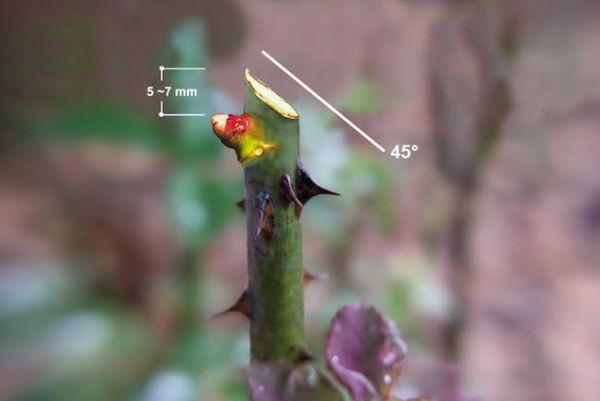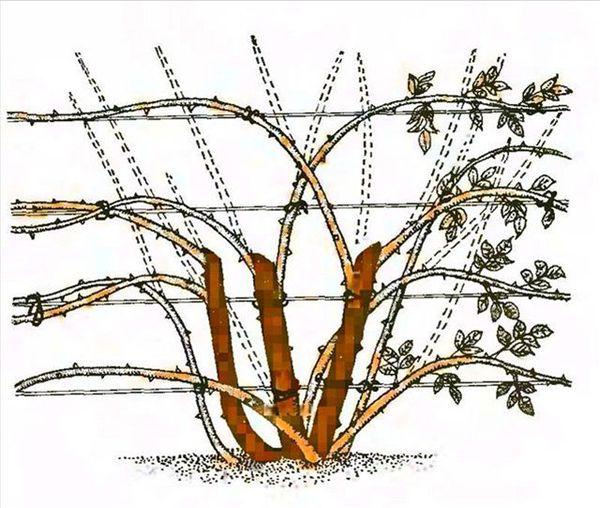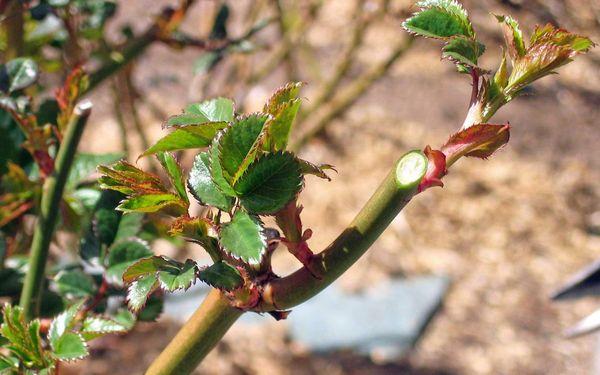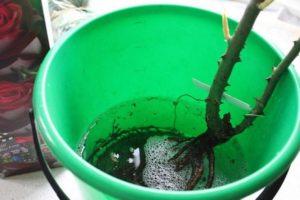When and how best to prune roses in the fall, the rules for preparing for winter
Royal flowers are considered the most striking decoration of any garden. One of the important points in caring for them is pruning. But when it is necessary to cut roses in the fall, before the onset of frost, many do not know. In order to enjoy the lush bloom in each new season, this process should be a must. Autumn pruning is the key to plant health.
Why cropping?
Ensuring a long and healthy plant life is the goal of every gardener. If in spring pruning is needed to form a bush, then in autumn this process makes the bush stronger and prolongs its youth.
It is especially important to organize wintering of plants in cool regions, otherwise they will not survive the winter. Many varieties cannot go dormant on their own. When the temperature drops, they fall asleep, and the degrees rise slightly - they resume the movement of sap, which forms cracks filled with ice on the branches and roots.
In addition, pruning a bush is performed for the following purposes:
- the bush begins to grow faster;
- the development of strong young shoots is stimulated;
- a large number of strong kidneys appear;
- the risk of contracting diseases is reduced;
- rhizome develops better;
- it is convenient to prepare the trimmed bush for winter;
- accumulate nutrients.
Those roses that were left without cutting are more at risk of freezing. And the shoots left for the winter successfully rot.

Timing of the procedure
The timing of pruning royal flowers mainly depends on the weather and climatic characteristics of the region. Many gardeners recommend starting the process between late October and mid November. The exact dates can be checked according to the lunar calendar. The day on the waning moon is considered an auspicious day.
The optimum weather temperature is stable minus 3-5 degrees. Make sure no more warming is expected.
Required tools
The first thing that is recommended to pay attention to is the purchase of special gloves. Regular rubber spikes are not suitable as the spikes will easily pierce them and injure your hands. Therefore, you need to use tight gloves with a rubberized part.
When pruning a plant, you cannot do without a garden pruner. It is convenient for them to remove thin branches, shoots, faded buds. When buying an instrument, you need to choose one that will fit comfortably on your hand.In addition, his blade should not be thin so that thick branches cannot break it.

The next important tool is the long-handled pruner. It is quite easy for them to reach long branches that they cannot reach with their hands. There are different options for such a tool. Many pruning shears come with foam rubber handles for a comfortable grip. This tool is not suitable for pruning roses, as thorns will cling to the handles. It is recommended to choose secateurs with plastic pads.
A folding saw works well for easy cutting of the thickest branches. It should have anti-rust treatment to avoid rusting.
All instruments must meet the relevant requirements:
- lightweight and comfortable in the hand;
- the blade must be sharp enough, otherwise it can injure the branches;
- the blades at the end should be narrowed so that it is easy to reach hard-to-reach branches;
- the handle should not slip.
It is advisable to choose bright tools so that they can be found easily and quickly in the grass.
Before pruning, it is recommended to lubricate the tools with manganese solution or garden varnish. This must be done in order not to infect the rose with various infections.
How to properly prune for the winter?
In order to properly cut roses for the winter, gardeners need to adhere to a certain algorithm of actions. All varieties of roses have their own pruning characteristics. Important: on all varieties of roses, the cut is made one centimeter above the outer bud, at an angle of 45 degrees.

There are several ways to prune plants:
- short when two dormant buds remain;
- medium, the plant is shortened in half, leaving 30 centimeters of shoots;
- long, when tall shoots remain, slightly shortened;
- gentle, in which only the top of the shoots is cut off.
Autumn pruning is not needed only for ground cover roses. Sick, broken and lost their decorative shoots are removed from them.
Stamp roses
In such plants, the grafted part is high from the ground. This means that special pruning is needed in preparation for winter. The process is based on the characteristics of the grafted plant, where the removal of weak and unnecessary shoots allows the bush to leave strength for further active growth. Since standard roses are overly susceptible to cold weather, they need good frost protection.
Climbing roses
In the fall, climbing roses are not very pruned, since you need to preserve the entire length of the branches, on which luxurious inflorescences will bloom in the future vegetative season.

First of all, pest affected, damaged and unripe branches are removed. It is also important to clear the plant of unproductive shoots that litter the bush. Young shoots are shortened to an old tree trunk. After the procedure, all inflorescences and leaves are removed.
Pruning hybrid tea roses
Plants of the hybrid tea variety winter well. Pruning is necessary so that they can easily withstand the cold, and new and strong flowering branches appear. It is recommended to cut the climbing rose in moderation - half the branches are removed. This allows for another pruning in the spring to remove frost-damaged shoots.
When preparing the plant for winter, young shoots are not removed. Hybrid tea roses release buds first on old branches, and then young ones bloom.
Floribunda rose pruning
Floribunda is one of the winter weather resistant roses. To ensure luxurious flowering in the summer, a bush is pruned 50 centimeters from the ground in mid-autumn. You can cut the plant short, then next year a short bush will grow, with evenly strewn, but luxurious buds.

If the gardener wants to keep the bush high, very little is cut. In such roses, the upper part of the bush is most susceptible to flowering.
Polyanthus roses
Pruning these plants is limited to the removal of damaged and immature branches. The ideal option would be to leave about 8 main healthiest branches. The shoots inside the bush are cut to form a spherical shape. 6-7 buds are left on small branches. Low-growing polyanthus roses branch strongly, so they are cut low. You only need to leave a couple of buds on each branch.
Preparing for shelter
Reliably hiding roses from frost is the main purpose of preparing for winter. This should be taken seriously, as the survival of plants depends on the process.

Roses need feeding before winter. For this, a complex fertilizer is suitable, which will saturate the plant roots and support the entire cold period. It should include:
- phosphorus;
- calcium;
- potassium monophosphate;
- superphosphate;
- sulphate potassium;
- boric acid.
Ash can be added.
Then all the leaves are cleaned under the plant and burned to kill the pests that are there. For the prevention of fungal infections, plants are treated with copper or iron sulfate. And with the first frost, you should start to insulate.
When to start loosening the soil?
Already at the beginning of autumn, you can start preparing roses for winter. In mid-September, the leaves on the lower part of the bush are removed, and the plant is hilled. Loosening with soil is carried out to a height of 30 centimeters.

For hilling, nutritious dry soil is taken, mixed with sand. You cannot rake the earth next to the bush, so as not to accidentally expose the roots. You cannot add the peat mixture to the soil, otherwise on frosty days it will transform into sharp large stones that can injure the bark on the plant.
Warming the roots by loosening will prevent damage and the occurrence of cracks that arise under the influence of a sharp frost.
What and how to cover roses for the winter?
High-quality material is selected for sheltering roses. It must meet the requirements for the plant to create an ideal microclimate. To protect against evaporation, when the frosts begin to subside and prolonged thaws begin, the coating should not be in close contact with the bush. In addition, it must be:
- dense;
- lasting;
- vapor permeable.
These qualities will allow oxygen to flow freely, and the plant will not suffocate.

Important: it is better to hide the rose for the winter later than prematurely.
You can cover the plant according to different schemes and methods:
- airy, when a house is made from the frame, stretched with polyethylene, covered with soil;
- shield, when the branches are tied with a bundle, they bend to the ground, and polyethylene or agrofiber is pulled from above;
- put on jute bags on top of the plant;
- wrap with cardboard.
Standard roses that grow in tubs are taken to a cold basement.
Features of preparing flowers for winter in different regions of Russia
Each region has its own nuances when preparing roses for winter. What matters is an open or closed place, sunny or shady.

The optimal options are considered to be:
- shelter of roses for the winter in the Urals - from early numbers to mid-October;
- the central European part and Moscow region - from the 20th of October to the 10th of November;
- southern stripes - from the 20th to the 30th of November;
- Siberia - in early November.
In the Moscow region, from October 15, roses enter a state of rest, so you can start the procedure after this date. In very cold areas, for example in the Tyumen region, it is recommended to plant roses in tubs and hide them in a cellar for the winter.
Caring for roses is an important component for the beauty of every garden plot. It is necessary to take into account the peculiarities of plant varieties and the natural and climatic conditions of the regions. Properly performed procedures ensure the health of beautiful flowering shrubs.










I cut roses not only in autumn, but also in spring, so they recover faster and the flowering period is much longer. Pruning cannot be underestimated and must be done every year.